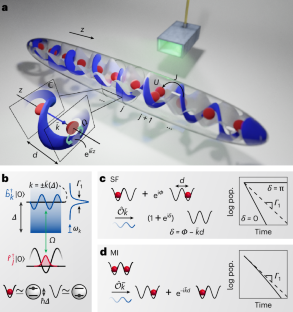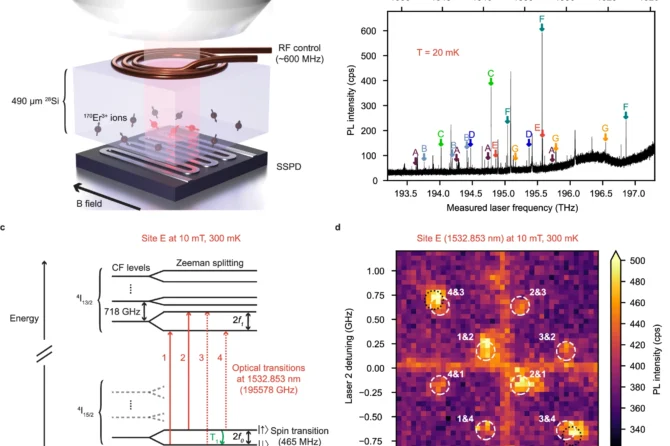A research team led by Professor Dominik Schneble has made a significant breakthrough in quantum optics by discovering a new regime of cooperative radiative phenomena, addressing a question that has puzzled scientists for 70 years.
The study focused on spontaneous emission, a quantum process where an excited atom releases a photon and drops to a lower energy state. In 1954, physicist R. H. Dicke theorized about what happens when two atoms are placed close together during this process. He predicted that with two atoms, the probability of finding an excited atom would only decrease to one-half, rather than zero, due to two possible scenarios: superradiance (stronger emission when atoms are in phase) and subradiance (no emission when atoms are opposite in phase).
Schneble’s team innovatively used ultracold atoms in a one-dimensional optical lattice to create arrays of synthetic quantum emitters. Unlike conventional systems that emit photons at light speed, their setup emitted slow atomic matter waves. This crucial difference allowed them to explore collective radiative phenomena in previously inaccessible regimes.
The researchers achieved unprecedented control over subradiant states, allowing them to halt spontaneous emission and observe where radiation was stored within the array. This level of control and observation had never been demonstrated before.
The study has particular relevance for quantum information science and technology, especially in the context of long-distance quantum networks. Traditional theories assume photons move quickly between nearby emitters, but in long-distance quantum networks, guided photons may take considerable time to travel between emitters. The team’s use of matter waves, which are billions of times slower than photons, allowed them to explore this previously unexamined regime.
The research team, which included PhD students Youngshin Kim and Alfonso Lanuza, observed how collective decay from a superradiant state containing a single excitation requires time to form, only occurring after neighboring emitters have communicated. Lanuza developed mathematical solutions for complex cases involving multiple atoms and photons, despite the theoretical challenges of tracking slow radiation in a system of emitters.
Published in Nature Physics with an accompanying theoretical paper in Physical Review Research, this work establishes ultracold matter waves as a valuable tool for studying many-body quantum optics in spatially extended and ordered systems. The findings have potential applications in enhancing long-distance quantum networks and advancing quantum science technologies.
“Super- and subradiant dynamics of quantum emitters mediated by atomic matter waves” by Youngshin Kim, Alfonso Lanuza and Dominik Schneble, 18 November 2024, Nature Physics. DOI: 10.1038/s41567-024-02676-w
“Exact solution for the collective non-Markovian decay of two fully excited quantum emitters” by Alfonso Lanuza and Dominik Schneble, 21 August 2024, Physical Review Research. DOI: 10.1103/PhysRevResearch.6.033196




